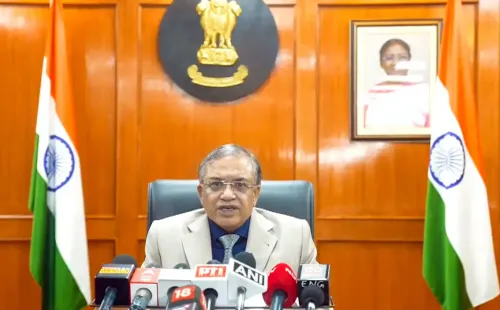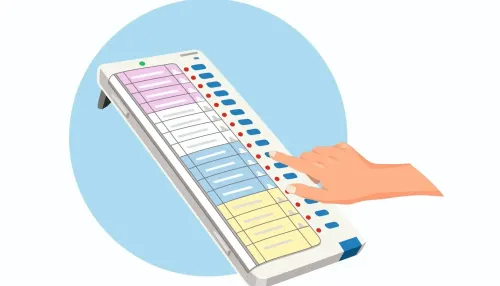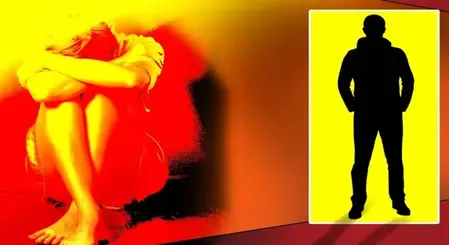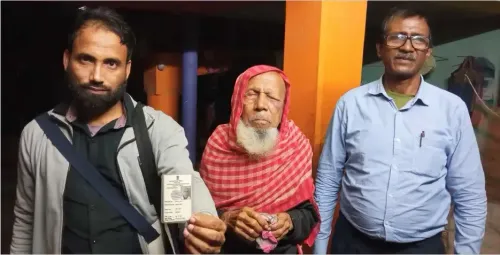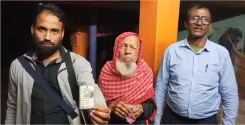How Many Biometric Details of Myanmar Refugees Have Been Collected in Mizoram?
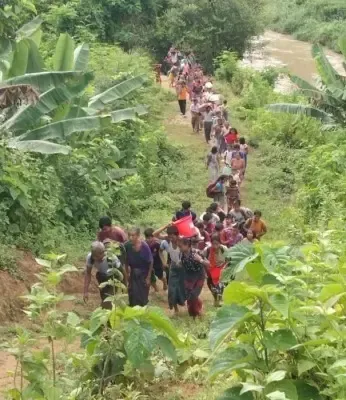
Synopsis
Key Takeaways
- Mizoram has collected biometric data from 12,170 Myanmar refugees.
- The initiative started in July 2021 in Serchhip district.
- Challenges include technical difficulties and internet connectivity issues.
- Support from local councils and organizations is being utilized.
- Biographical information is also being gathered alongside biometrics.
Aizawl, Oct 8 (NationPress) Authorities in Mizoram have successfully gathered biometric information for approximately 39 percent of the nearly 31,300 refugees from Myanmar who sought sanctuary in the state after escaping their homeland due to the military coup in February 2021.
An official from the Mizoram Home Department indicated that the biometric data collection has reached around 12,170 refugees so far.
Initially, the biometric enrollment initiative was launched by the Serchhip district administration in central Mizoram on July 30, which was later expanded to other districts.
As per the directive of the Ministry of Home Affairs, the biometric enrollment is being conducted through the 'Foreigners Identification Portal and Biometric Enrollment'.
The official acknowledged that various challenges, such as technical issues and inconsistent internet access in remote regions, have hindered the process; however, despite these obstacles, the authorities have persevered with the enrollment, albeit at a gradual pace.
In addition to the Myanmar refugees, about 3,000 migrants from the Chittagong Hill Tracts (CHT) of Bangladesh have also found refuge in three districts of Mizoram over the past two years.
The majority of the Bangladeshi refugees (around 2,000) are residing in Lawngtlai district in southern Mizoram, which borders both Myanmar and Bangladesh.
Tribal refugees from Bangladesh have also been accommodated in Lunglei and Serchhip districts. Both Myanmar and Bangladesh refugees are residing in camps, with relatives, and in rental homes across all 11 districts in this Northeastern state.
The Home Department official stated that collecting biometric details is more straightforward for those in camps, but it becomes complicated for those living with relatives or in rented homes scattered across numerous villages.
To address this issue, local authorities have enlisted the support of Village Councils and Civil Society Organizations, particularly the Young Mizo Association (YMA).
Alongside biometric information, the enrollment process entails gathering biographical details such as names, addresses, parents' names, and previous employment records in both Myanmar and Mizoram.
Before commencing the collection of biometric details, the Mizoram government provided extensive training to district officials to ensure effective data gathering from refugees residing in the state, which shares an unfenced international border of 510 km with Myanmar and 318 km with Bangladesh.
Since the military coup in Myanmar in February 2021, refugees, including women and children from the neighboring country, have been arriving in Mizoram in search of safety, with their numbers now totaling around 31,300.
The Bawm community, a tribal group from the CHT of Bangladesh, has also been staying in Mizoram for over two years after fleeing due to ethnic conflicts and military crackdowns.
Most of the Myanmar refugees belong to the Chin tribes, who share significant ethnic and cultural similarities with the predominant Mizos of Mizoram, while the Bawm, or Bawmzo, are a small ethnic group primarily found in the CHT of Bangladesh and also closely resemble the Mizos of Mizoram in both ethnicity and culture.
Myanmar's Chin state shares a mountainous border of 510 km with six Mizoram districts: Champhai, Siaha, Lawngtlai, Hnahthial, Saitual, and Serchhip. On the other hand, Mizoram's three districts—Mamit, Lunglei, and Lawngtlai—have a 318 km border with Bangladesh.


